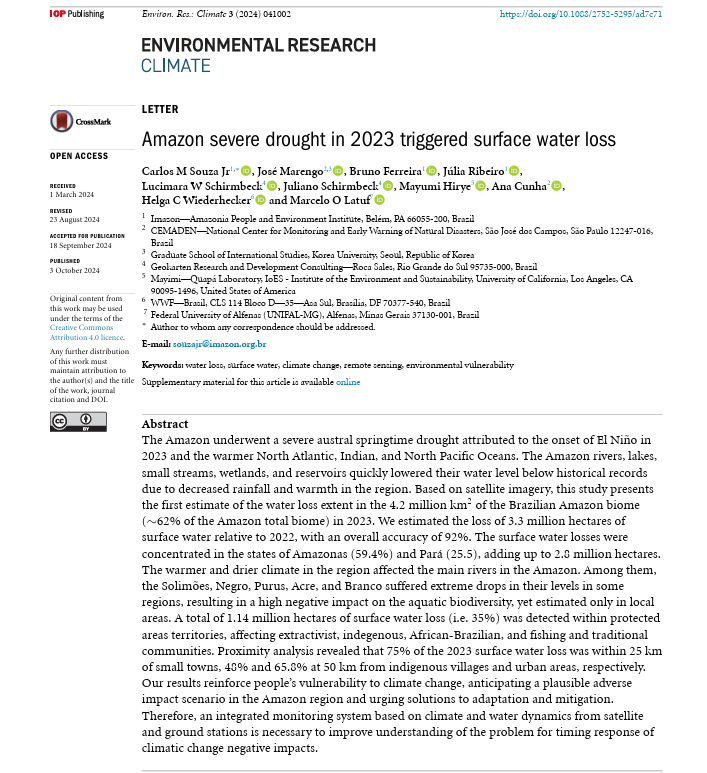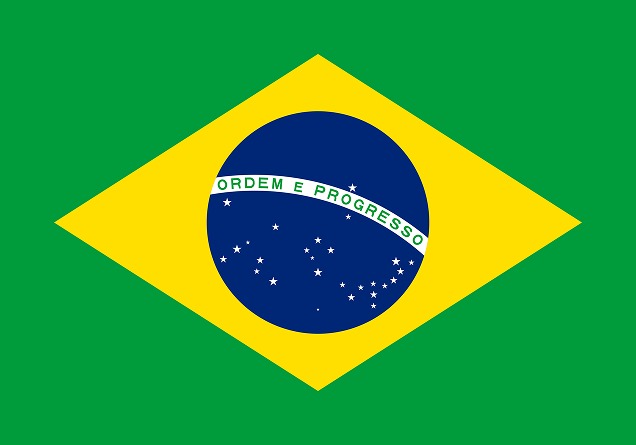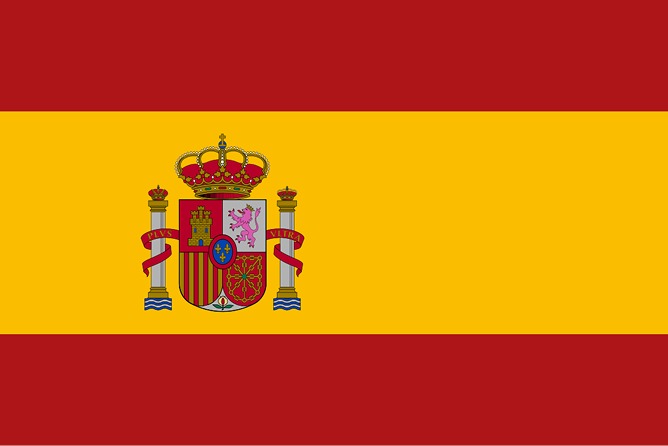No podemos encontrar internet
Intentando reconectar
¡Algo salió mal!
Espera mientras volvemos a la normalidad

Amazon severe drought in 2023 triggered surface water loss
03/10/24Souza Jr, Carlos M; Marengo, José; Ferreira, Bruno; Ribeiro, Júlia; Schirmbeck, Lucimara W; Schirmbeck, Juliano; Hirye, Mayumi; Cunha, Ana; Wiederhecker, Helga C; Latuf, Marcelo O. Amazon severe drought in 2023 triggered surface water loss. Environmental Research Climate, 2024. https://iopscience.iop.org/article/10.1088/2752-5295/ad7c71
Abstract
The Amazon underwent a severe austral springtime drought attributed to the onset of El Nino in 2023 and the warmer North Atlantic, Indian, and North Pacific Oceans. The Amazon rivers, lakes, small streams, wetlands, and reservoirs quickly lowered their water level below historical records due to decreased rainfall and warmth in the region. Based on satellite imagery, this study presents the first estimate of the water loss extent in the 4.2 million km2 of the Brazilian Amazon biome (∼62% of the Amazon total biome) in 2023. We estimated the loss of 3.3 million hectares of surface water relative to 2022, with an overall accuracy of 92%. The surface water losses were concentrated in the states of Amazonas (59.4%) and Pará (25.5), adding up to 2.8 million hectares. The warmer and drier climate in the region affected the main rivers in the Amazon. Among them, the Solimoes, Negro, Purus, Acre, and Branco suffered extreme drops in their levels in some regions, resulting in a high negative impact on the aquatic biodiversity, yet estimated only in local areas. A total of 1.14 million hectares of surface water loss (i.e. 35%) was detected within protected areas territories, affecting extractivist, indegenous, African-Brazilian, and fishing and traditional communities. Proximity analysis revealed that 75% of the 2023 surface water loss was within 25 km of small towns, 48% and 65.8% at 50 km from indigenous villages and urban areas, respectively. Our results reinforce people’s vulnerability to climate change, anticipating a plausible adverse impact scenario in the Amazon region and urging solutions to adaptation and mitigation. Therefore, an integrated monitoring system based on climate and water dynamics from satellite and ground stations is necessary to improve understanding of the problem for timing response of climatic change negative impacts.
 PT
PT
 ES
ES
 EN
EN

